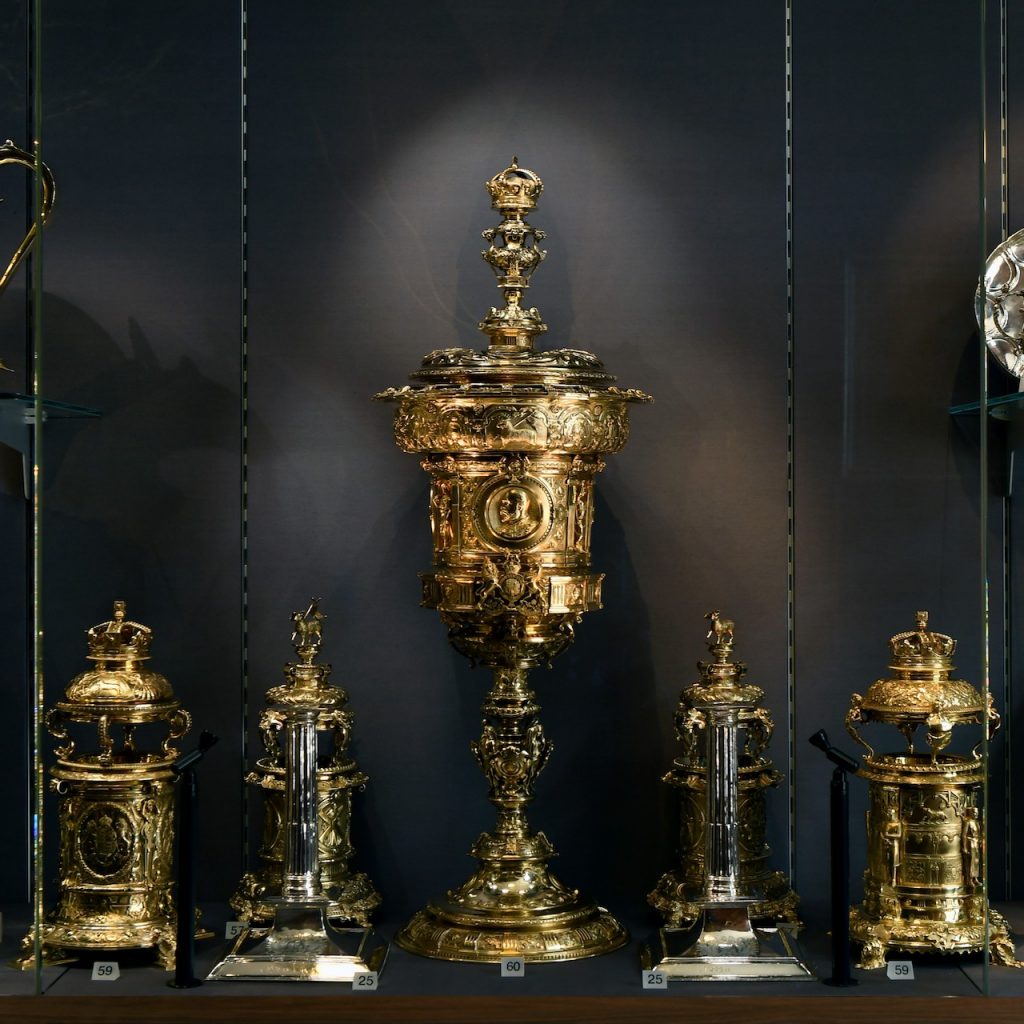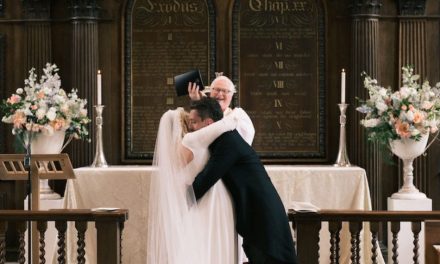King Edward VII, when Prince of Wales, was admitted to the Inn and Called to the Bar and Bench in 1861. As Royal Bencher, he marked his term as Master Treasurer in 1887 by presenting the Inn with a handsome silver-gilt two handled cup and cover in neoclassical style and hallmarked for 1800; it bears the maker’s mark of the pre-eminent and celebrated silversmith of the Regency period, Paul Storr. It has served as the Loving Cup at Grand Days and Readers’ Feasts since its presentation.
But that is not the only silver in the Inn’s collection which is connected to that Sovereign and Royal Bencher. He acceded to the throne in 1901 and his Coronation took place in August 1902. In January 1903, Parliament noted that ‘the Society has for the first time in the history of the Inns of Court the honour of numbering the reigning King amongst its Benchers’. To mark the occasion, it was resolved that the Inn should commission ‘some permanent memorial’ that should ‘take the form of a work of art in metal of worth and workmanship suited to such an occasion’. A committee was appointed to ‘consider the details’.
In February 1903, the committee resolved that the items ‘be of the highest style of art’ and thought that ’the designer will probably prefer the Elizabethan period’. After holding a competition for the designs of the memorial pieces with approaches to a number of designers and silversmiths, there followed fairly protracted discussions and deliberations. Finally, the committee settled on designs to be made by Mappin & Webb and William Hutton. They are hallmarked for 1904 and were delivered by November in that year.
They are a massive silver-gilt pedestal cup and cover and two pairs of silver-gilt standing salts, one pair with Royal crown finials and the other with Middle Temple Paschal Lamb finials. It is interesting to note that the final designs were indeed of ‘the Elizabethan period’; this may be confirmed by comparing the form and decoration of both the cup and cover and the standing salts, with the Steeple Cup of 1610 and the Standing Salts of 1573 and 1585 which the Inn acquired some 30 years later as part of the Rothermere Gift.

The pedestal cup and cover, by Mappin & Webb, stands three feet high and is highly decorated. It has a crown finial with the lid having panels depicting Britannia, Queen Elizabeth I, a crusader, and a masonic temple with further elaborate decorative animals. The rim has decorations of fruit. There are three plaques on the main body depicting scenes of the Coronation and the upper body has chased depictions of items of the Coronation regalia. The lower body has the Royal Coat of Arms, and the stem has emblems of Australia, Canada, India, and Africa. There are further decorations of fruit around the base and foot. A cartouche on the foot is engraved:
Edward VII, King of Great Britain and Ireland, Emperor of India, a Master of the Bench of this Hon. Society; Treasurer 1887, crowned at Westminster the 9th day of August 1902; whom may God long preserve.
The pair of standing salts, made by Hutton & Sons, are over 16 inches high topped with crown finials and are highly decorated in the Elizabethan Mannerist style. They are engraved with the King’s cipher beneath a crown and the date 1904. One of the pair has four panels with representations for Canada, Australia, and India, and the fourth, the Royal arms. Cast dolphins carry the lid. The other of the pair has detachable panels depicting Knights Templar together with copies of ornaments on the roof and screen in Hall. The lid is carried on cast putti (cherubs) holding shields.
The other pair of standing salts, these made by Mappin & Webb, whilst looking similar at first glance, perhaps owing to their being of similar height, in fact have a different theme and very different decoration. They are also in the Elizabethan Mannerist style, being elaborately decorated with cast masks, floral swags and strapwork. Beneath the Lamb and Flag finials the covers are chased with the national emblems of rose, shamrock, thistle, and leek. On the body of one is depicted the patron saints of England and Ireland, and on the other, the patron saints of Scotland and Wales. The bases are engraved with the Royal Coat of Arms, and the undersides with the King’s cipher and the names of the Treasurers of 1903 and 1904, those of the members of the committee and of the Under Treasurer.
These very impressive pieces, whilst in the style of ‘the Elizabethan period’, as originally proposed by the committee, are very definitely in the High Victorian aesthetic style and must therefore reflect the taste of the members of the committee and the age in which they lived. There is no trace of the influence of the then contemporary Arts and Crafts Movement nor of the emergent Art Nouveau style spreading from Europe, and France in particular, at this time.
The decoration and engraving on the pieces are strongly indicative of the different world of the opening years of the 20th Century. They are illustrative of the self-confident mood of the age – with pride apparent in the Empire and the dominions and colonies spread throughout the continents – something now perhaps difficult both to understand and which provokes different reactions 120 years later.
It is also interesting to discover that these items cost the Inn a total of £700 in 1904. That now equates to a sum in excess of £60,000; it is highly unlikely that in this day and age the Inn could conceive of spending such a sum, even to commemorate a Coronation. However, they were a good investment – the latest valuation for insurance purposes shows that to replace the cup and cover and the four standing salts would cost several times the original amount.

Master John Leslie was a Queen’s Bench Master from 1996 to 2016 and has been a Bencher of the Inn since 2002. He was appointed Master of the Silver in 2017. He grew up surrounded by silver, as his father’s business was in the London Silver Vaults; so he has had an interest in it all his life.




